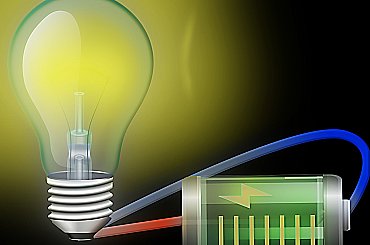Green Technology – The Living Battery That Eats Itself After Use
Researchers at the Swiss Federal Laboratories for Materials Science and Technology (Empa) have developed a groundbreaking energy innovation—a 3D-printed, biodegradable fungal battery. Unlike traditional batteries that require charging, this one needs feeding. Using fungi as the core element, the battery delivers power to devices like temperature sensors and biodegrades once it’s no longer in use.

You are not logged in
If you want to read more, join the ENERGY-HUB club
LoginTry the monthly membership in the ENERGY-HUB club for free!
Related articles
Researchers develop high transparency nanocellulose film for photovoltaics, packaging
The nanocellulose film can be used for light management as its light scattering is adjustable. It also exhibits a transmittance of…
Sodium-ion batteries key for India’s storage manufacturing ambitions
A new report says sodium-ion batteries (SIBs), made from abundant materials, could help India to reduce its dependence on imports…
€1.8 Million Research Grant for Sequence Impulse Hydrogen Project to Decarbonize Blast Furnaces
A research project to establish decarbonization technologies for the steelmaking industry, in which Primetals Technologies is an a…
China's First Ton-Level Liquid Hydrogen Unmanned eVTOL Aircraft Completes Test Flight
China's first ton-level liquid hydrogen powered electric unmanned vertical takeoff and landing (eVTOL) aircraft completed its test…
NASA Awards NIAC Funding to Hydrogen Hybrid Power for Aviation Sustainable Systems (Hy2PASS)
NASA has announced the recipients of its 2025 Phase I NIAC (NASA Innovative Advanced Concepts) awards, which fund early-stage stud…
ENERGY-HUB is a modern independent platformsharing news and analytic articles from the energy sector on a daily basis. Within our portfolio we monitor czech, slovak and foreign press releases.



